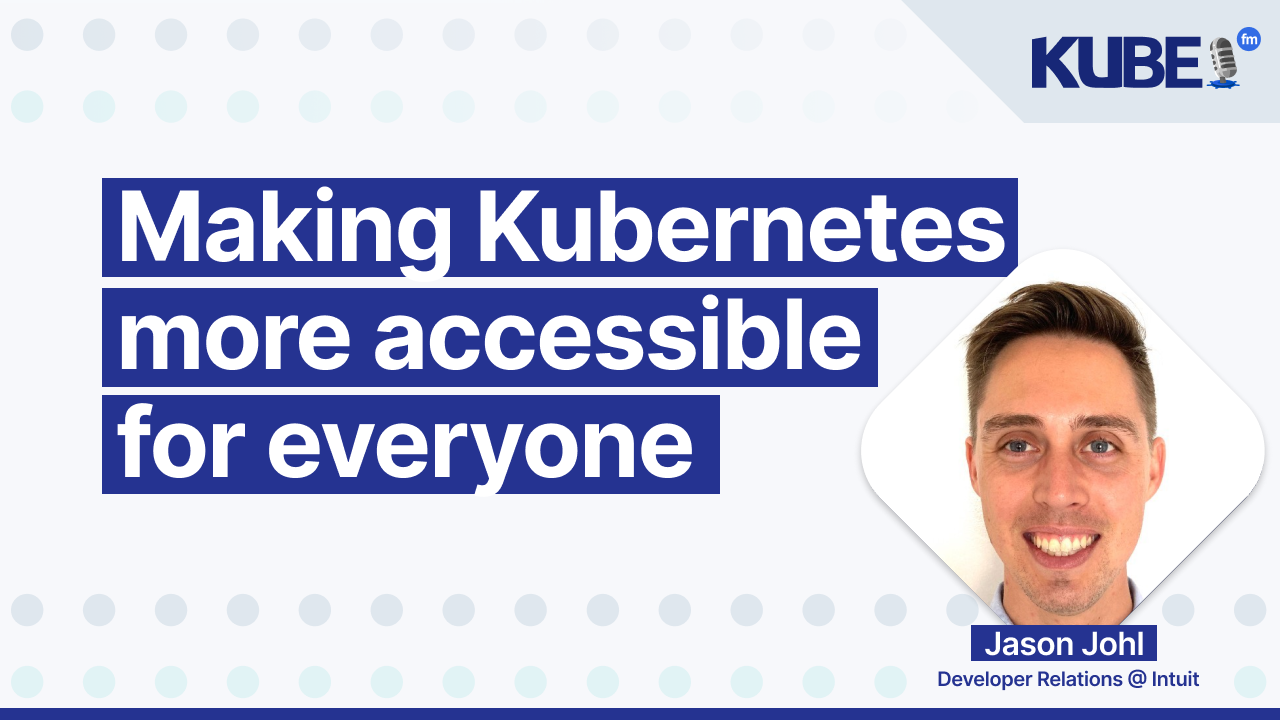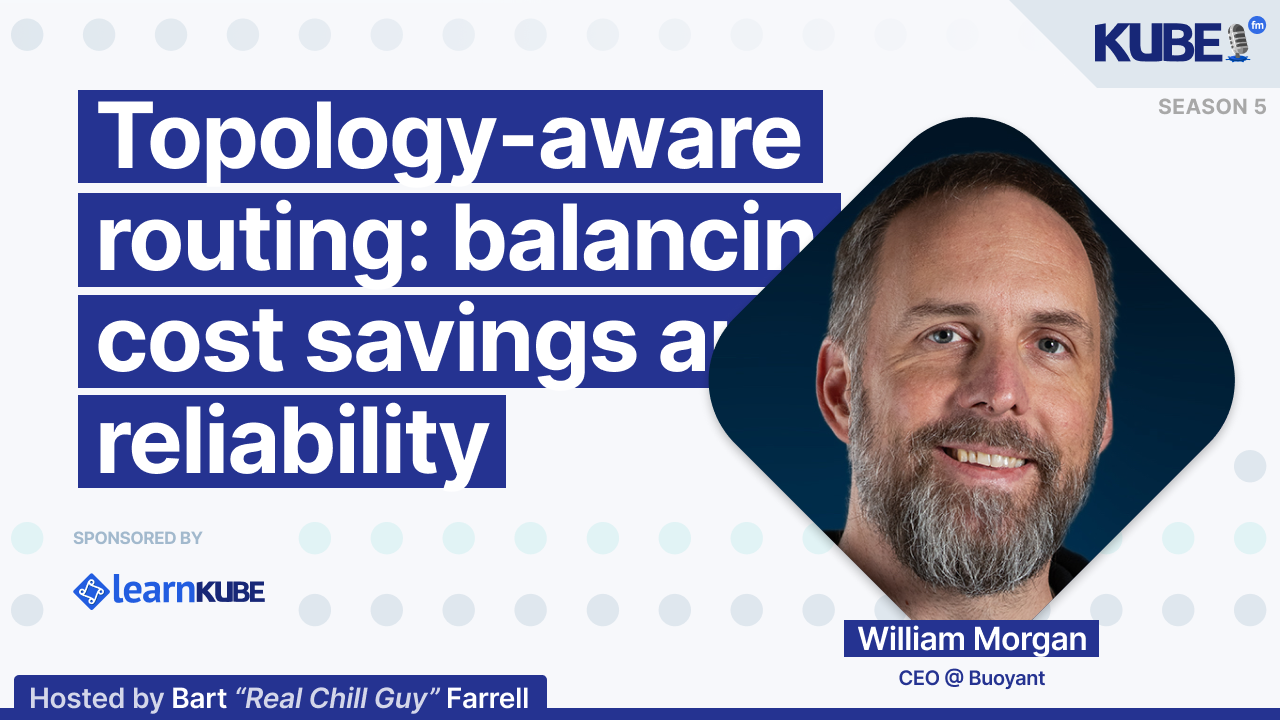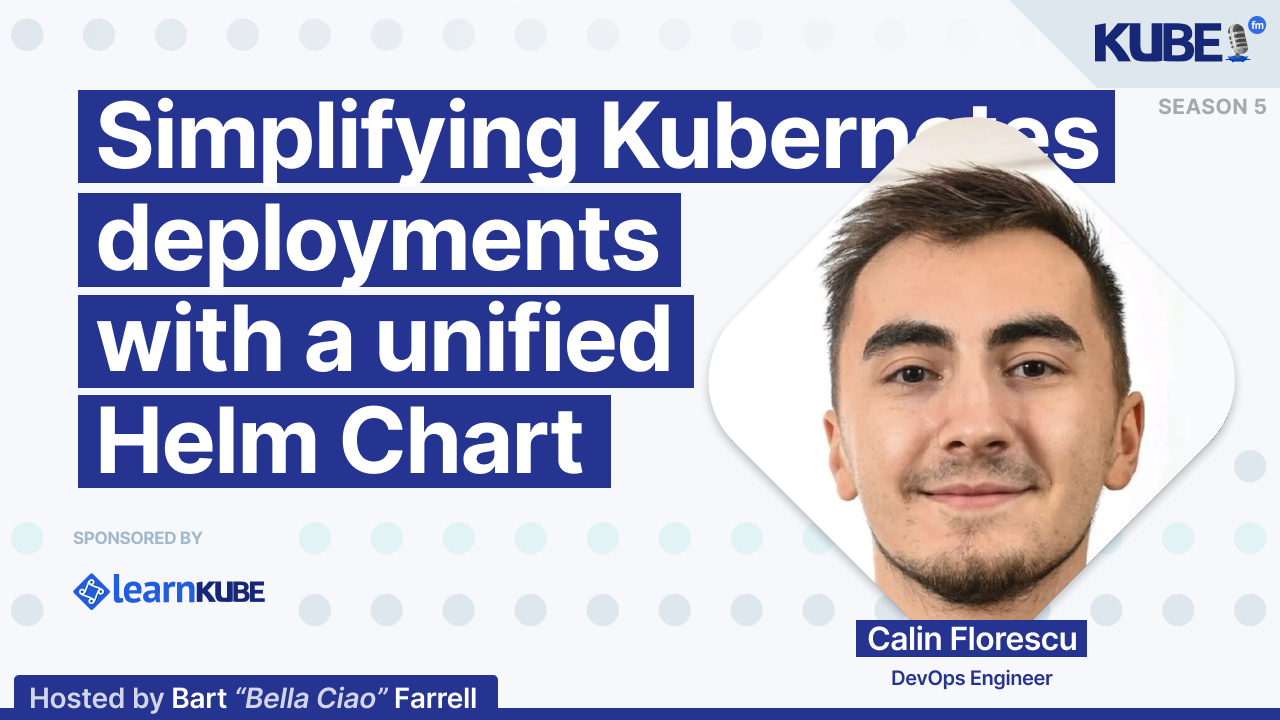Making Kubernetes more accessible for everyone
Apr 17, 2025
From emerging tools to AI integration in Kubernetes operations, this interview explores the evolving cloud-native landscape.
In this interview, Jason Johl, Developer Relations at Intuit, discusses:
Emerging Kubernetes tools and Intuit's contributions to the ecosystem, including Argo CD 3.0, Numaproj for event streaming, and plugins for ephemeral access and environment promotion
AI integration in Kubernetes operations through LLMs for auto-identification and auto-remediation of incidents, and anomaly scoring during canary deployments
Kubernetes abstraction and accessibility, highlighting how Intuit manages 345+ clusters while shielding developers from infrastructure complexity, and the future focus on making Kubernetes accessible to everyone
Relevant links
Transcription
Bart: Jason Johl works for Intuit, a well-known financial software company. The transcript appears to be a direct introduction where Jason is describing himself and his professional affiliation.
Jason: Hi, I'm Jason Johl. I work for Intuit on the Developer Relations team.
Bart: I notice the transcript snippet is very short and doesn't provide the full context of Jason Johl's response about emerging Kubernetes tools. Without the complete context, I can't confidently hyperlink specific terms. Could you provide the full transcript of his answer?
Jason: I think Argo is probably number one. We have a big release here at ArgoCon, with version 3.0 coming up. Intuit is a huge founder and maintainer of Argo, so we're always looking at emerging patterns within that community. We have some interesting ephemeral access plugins, as well as environment promotion between dev, staging, and production environments.
Another project would be Numaproj, which is an evolving event streaming and event-driven application platform. We're using it internally at Intuit for an anomaly scoring use case. I would also highlight more mature products like Helm and Kustomize, which are widely used in the industry. We're seeing emerging patterns around creating more explainable ways to understand infrastructure changes, such as what happens when we modify a Helm chart in the underlying cluster infrastructure.
Bart: Our podcast guest expressed interest in using AIOps and eBPF to build tools that make SREs' lives easier. What are your thoughts on the potential of AI and advanced observability tools to improve DevOps practices?
Jason: There are several opportunities to incorporate LLMs into observability tooling. One approach is using open source tools like Kubernetes or K8sGPT for auto-identification and auto-remediation of incidents. For example, when an alert appears, you can identify its origin within the cluster and then resolve the issue by sending the log or error to an LLM. The LLM can provide a response, either default or augmented with proprietary context, and return an auto-remediation step to fix the alarm.
Another opportunity is around anomaly scoring. Using NumaFlow during a canary rollout, we can detect anomaly scores through an AI-assisted platform. This enables automated recovery by rolling back when anomalies are detected. These are two promising ways to incorporate AI into observability and incident management.
Bart: Another one of our guests, Calin, said, "I see Kubernetes as a platform, not just a container orchestration tool." What's your perspective on Kubernetes' evolution beyond container orchestration?
Jason: Platform is definitely key. We're here at KubeCon, and there are many projects in the Kubernetes ecosystem that provide additional features and ways to manage various resources and primitives. We've explored creating paved roads and enabling engineers to build on top of Kubernetes without needing to understand the full depth of container orchestration. There are ways to build layers that make Kubernetes more manageable and easier to consume.
Bart: Our guest stated that developers shouldn't know about the technology we're running. They shouldn't know about Kubernetes or write YAML. What's your view on how much Kubernetes knowledge developers should have?
Jason: We have over 345 Kubernetes clusters at Intuit, which is a massive scale. We can't expect every developer to know Kubernetes. We're seeing a shift where developers own specific pieces of business logic in their app code, but understanding the underlying infrastructure is a big challenge we don't want them to spend a lot of time on.
Our goal is to continue abstracting away different parts of Kubernetes infrastructure so developers can focus on building their application logic and code for their particular use case, rather than changing Kubernetes primitives and infrastructure configurations. This approach helps prevent incidents that often occur when developers misconfigure parameters like the number of replicas in YAML files, which can lead to system disruptions.
Bart: Kubernetes turned 10 years old last year. What can you expect in the next 10 years?
Jason: Kubernetes has hit a new level of maturity and is widely adopted across the industry. We're now at a point where we want to make it easier—Kubernetes for everyone. How can we make it more accessible? How do we build components and tooling so that everyone can take advantage of it, no matter what industry they're in?
Bart: What's next for you?
Jason: I'm at the Intuit booth doing demos on new Argo CD plugins our team is working on, like the ephemeral access plugin and the GitOps promoter. I'll be here and then probably just learning. KubeCon is a great place to see what the community is working on. I always discover new open source projects and patterns people are experimenting with. I'll be wandering around.
Bart: How can people get in touch with you?
Jason: You can find me on LinkedIn or on the CNCF Slack channel.




